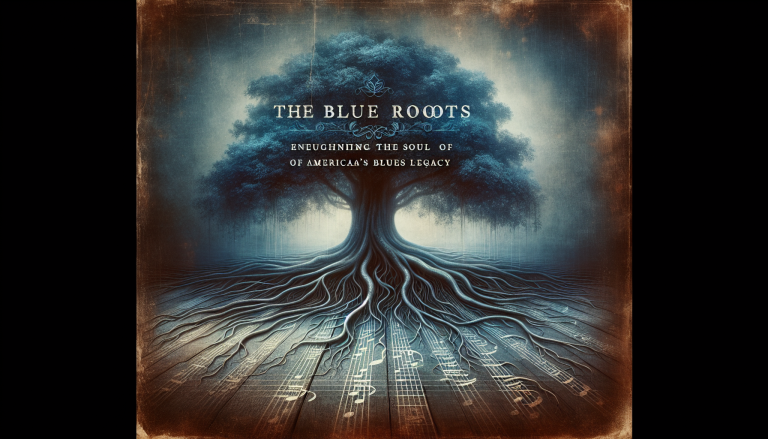The Blue Roots of a Cultural Titan: Historical Context of Blues Music
In the dusty crossroads of the Mississippi Delta, where the earth meets the river and the sun bleeds red at twilight, blues music was born—rooted deeply in the African American experience of suffering and resilience. Blues is not just a musical genre; it is the raw pulse of American music, a sonic testimony carved out of hardship, hope, and unquenchable spirit. Emerging in the late 19th and early 20th centuries, blues music evolved as a powerful form of expression for enslaved Africans and their descendants, who wove African musical traditions—call and response, polyphony, and improvisation—with the pentatonic scale and the harrowing tales of their daily existence.
From cotton fields to street corners, the blues was a language of survival, a way to articulate pain and joy simultaneously. The Great Migration northward in the early 20th century carried blues into urban landscapes like Chicago and Detroit, where electric guitars and amplified harmonicas transformed these songs of sorrow into anthems of defiance and creativity. Blues became the backbone of the American soundscape, seeding the growth of jazz and R&B music—genres that thrived on blues’ unique blend of melancholy and groove.
The Sound and Soul of Blues: Genre Description
Blues music is characterized by its distinct melodic framework—the twelve-bar blues pattern, with its cyclical tension and release. This pattern, often featuring a I-IV-V chord progression, invites improvisation, making each blues performance a spontaneous dialogue between musician, instrument, and audience. The blue notes—flattened third, fifth, or seventh degrees—add that aching, soulful punch that makes blues instantly recognizable and emotionally resonant.
Vocally, blues is gritty and conversational, often embedding storytelling rich with metaphors, allegories, and raw emotional candor. Themes commonly explore love lost and found, betrayal, hard labor, systemic injustice, and the quest for personal liberation. Instrumentally, traditional blues features guitar (acoustic or electric), harmonica, piano, and drums—each lending a voice that can wail, whisper, or groove with equal intensity.
Moreover, blues music is flexible—capable of intimate solo performances on a porch swing or roaring in a crowded juke joint. Its ability to absorb new influences without losing its core soul is what makes blues endlessly fascinating and eternally relevant.
Pioneers and Legends: Key Artists and Groups
Walk into any blues hall of fame, and names like Robert Johnson, Bessie Smith, and Muddy Waters immediately roar back in full color. Robert Johnson, often mythologized as the man who sold his soul at the crossroads, imbued blues with a haunting mystique through his intricate guitar fingerpicking and lyricism. With songs like “Cross Road Blues,” Johnson elevated the narrative and technical standard of blues music.

Then, there’s Bessie Smith, “The Empress of the Blues,” whose powerful contralto voice carried the pain and pride of African American womanhood during the Harlem Renaissance. Her recordings in the 1920s and ’30s, including “Downhearted Blues,” helped crystallize blues as a major commercial and cultural force.
Muddy Waters, hailing from Mississippi but electrifying Chicago’s urban blues scene, bridged rural and urban blues, influencing the evolution of rock ‘n’ roll and modern blues alike. Tracks such as “Hoochie Coochie Man” and “Mannish Boy” are synonymous with the Chicago blues sound—raw, amplified, and fiercely rhythmic.
Other luminaries like Howlin’ Wolf, Etta James, and B.B. King also carved indelible marks. B.B. King, with his expressive vibrato and luxurious phrasing on his guitar “Lucille,” personified the bridge between traditional blues and its crossover into mainstream American music and beyond.
Timeless Tunes and Landmark Albums
The blues catalog is thick with classic songs that have rippled through generations. “Sweet Home Chicago,” a standard immortalized by Robert Johnson and later expanded by countless blues artists, serves as an anthem of place and promise. “The Thrill Is Gone,” B.B. King’s signature song, epitomizes the perfect blend of sorrow and sophistication that blues can achieve, its haunting guitar lines and heartfelt vocals searing into the listener’s soul.
Albums such as Muddy Waters’ “Folk Singer” (1964) captured the raw acoustic sound of Chicago blues back to its roots, while Etta James’ “At Last!” (1960) fused blues with jazz and R&B stylings, showcasing blues’ genre-bending magic. These recordings are not just collections of songs; they are vibrant historical documents that preserve the spirit and evolution of blues music.
As R&B music emerged in the mid-20th century, heavily drawing upon the blues’ emotional depth and rhythmic complexity, artists like Ray Charles and Aretha Franklin blurred genre boundaries, propelling both blues and R&B into uncharted cultural spaces. Their work demonstrated that blues was not a relic confined to the past but a living, breathing force shaping contemporary American music.
The Lasting Impact: Blues Music’s Enduring Legacy
The influence of blues music on American music and culture is vast and irrevocable. It is the bedrock upon which jazz, R&B music, rock ‘n’ roll, and even hip-hop have been built. The emotional candor and musical frameworks devised by early blues musicians provided future generations the tools and freedom to innovate.
Blues music also played a vital role in social change, with its themes of struggle and liberation resonating deeply during the civil rights movement. Artists infused their music with messages of hope and resistance, making blues not just an art form, but a vehicle for empowerment.
Even today, the genre’s fingerprints are found everywhere—from the guitar riffs in a modern rock anthem to the soulful vocals of contemporary R&B. The communal spirit of blues—the idea that music can heal, connect, and express the inexpressible—continues to inspire musicians and audiences alike.
In the words of B.B. King, “The beautiful thing about learning is nobody can take it away from you.” Blues music, with its unyielding spirit and soulful groove, remains a treasured inheritance, a heartbeat of American music that continues to throb with fiery intensity. It is the sound of life’s hardships and joys spoken with honesty, improvisation, and a deep, soulful connection to the human experience—forever the rhythm and soul of our musical identity.